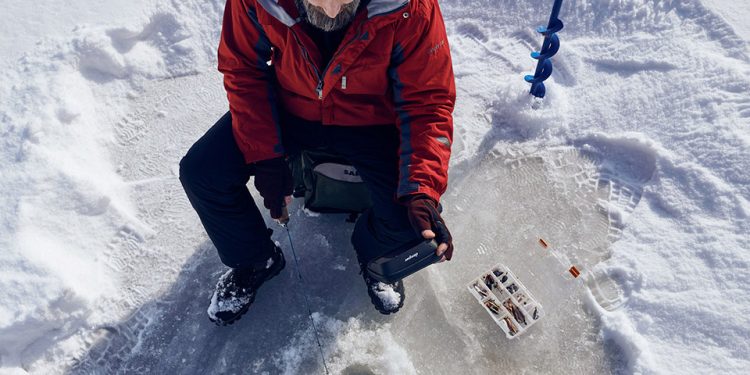Ice fishing can be challenging and a lot of hard work. That’s why those who love this activity, know to choose the right tools and gadgets to make things a little bit easier. Using the best rod and ice fishing fish finder will go a long way toward making your ice fishing much more enjoyable and successful. So, how do you make the most of your ice fishing fish finder? Keep reading to find out!
1. Keep Your Transducer Right Below the Ice
When using gadgets and electronics for ice fishing, it’s essential to follow a few key steps. Firstly, ensure that you drill your holes in a straight up-and-down manner. This helps maintain accuracy and stability while using your equipment. Secondly, position your transducer directly beneath the ice, keeping it as vertical as possible.
Any slush or skim on the transducer can disrupt its reading capabilities. Lastly, the initial step involves utilizing your depth finder to locate the bottom of the water body. By following these guidelines, you can effectively initiate the use of electronics for ice fishing.
2. Slowly Drop Your Lure
Once you have located the bottom using your depth finder, gradually lower your lure down the hole. As you descend, you will find that the visibility of the lure improves, becoming easier to track the further it goes into the water column. This happens because the cone angle of the depth finder widens as the water depth increases.
In comparison to the lure, fish typically generate a stronger signal or return on the depth finder. As a general guideline, it is recommended to reduce the gain or sensitivity settings to the lowest possible level. In fact, lower the sensitivity to the point where your lure is barely visible.
This adjustment will provide a clearer and more precise display. The significant advantage of using a sonar system during ice fishing is the ability to relocate or visually detect fish. It is crucial to remember that you are unlikely to catch fish that are not located below your position when ice fishing.
3. Choose the Right Fish Finder
Choosing the right fish finder really helps. This isn’t something you can do simply by looking at all your available options. Research the best fish finders and then check out reviews to get an understanding of which fish finder will work best for your ice fishing adventures. Take your time with this because fish finders can be quite expensive, so buying more than one isn’t desirable.
4. Keep Your Presentation Above the Fish
It’s generally advisable to position your presentation above the fish when ice fishing. As fish enter the cone angle and approach your bait or lure, gradually elevate the presentation to encourage them to ascend the water column. This technique can entice fish to strike.
5. Read the Bottom Composition
In addition to the apparent factors of searching for fish and observing their response to your fishing techniques, paying attention to the bottom composition can significantly benefit ice anglers. Understanding the makeup of the lake bed can provide valuable insights. For instance, Walleye tend to favor areas with rocky structures, while panfish are often found over soft bottoms where insect larvae burrow into the mud.
The bottom composition frequently plays a role in the fish’s behavior, and it is your responsibility to determine the preferences of your target species. By recognizing and adapting to the specific patterns associated with the bottom composition, you can enhance your chances of success on the ice.
Ice fishing may be one of the most difficult forms of fishing, but it can also be the most rewarding. Thanks to the tips we’ve shared with you here, you’ll be ice fishing like a pro in no time, and enjoying it a lot more to boot!





